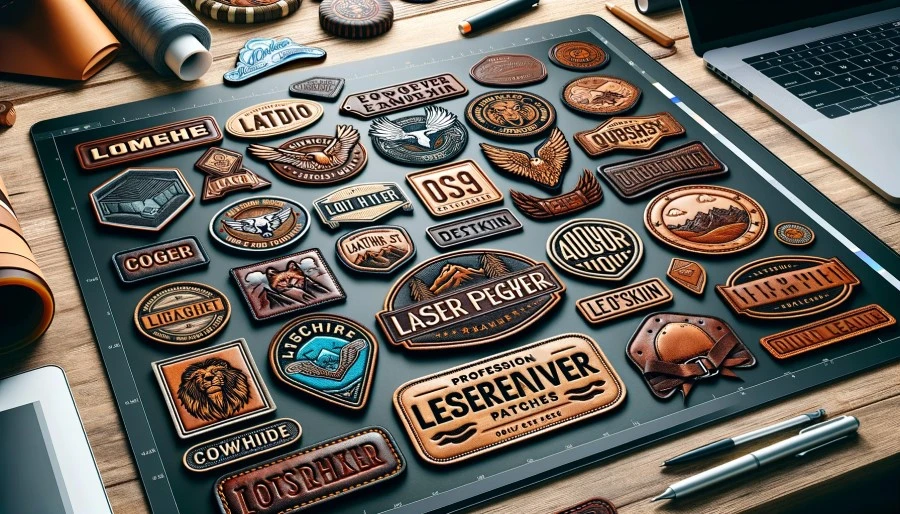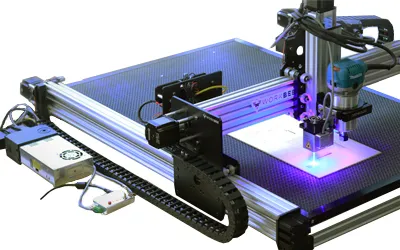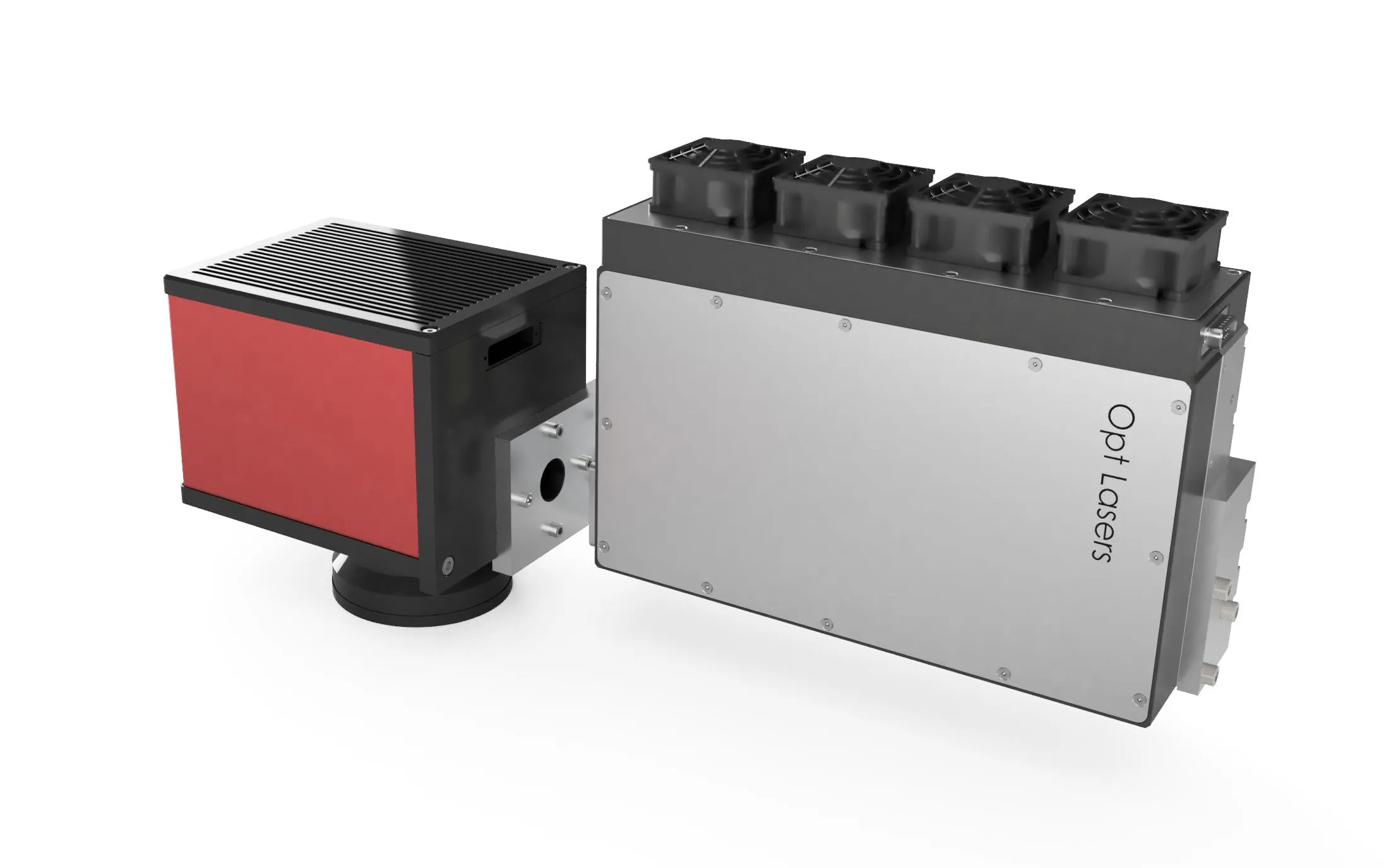What Leather Patch Laser Machine Suits You Best?
In the realm of leather processing, the emergence of the Leather Patch Laser Machines has revolutionized how manufacturers and professionals approach cutting and engraving leather. A laser engraver for leather patches is a technology that offers precision, efficiency, and versatility. Furthermore, it stands as a testament to the blend of traditional craftsmanship with modern technology. This article aims to guide you through the nuances of leather patches and laser engraving machines, helping you select the best tool for your leather processing endeavors, whether you want to laser designs on smaller or larger leather patches, also discussing how the type of leather you want to use affects what laser machine is the most suitable for you.
Leather Patch Definition
Leather patches, a staple in the world of fashion and functional wear, are pieces of engraved or coloured leather that can be attached to various items like jeans, jackets, backpacks, and caps. Apart from being able to serve as decorative elements, they can also serve practical purposes such as brand identification, style enhancement, and covering or repairing wear and tear. Non-artificial leather patches in commercial uses are typically made of cowhide, pigskin or less often deer leather. Each animal origin results in different behaviour of the leather patch upon laser engraving or cutting. From the rugged full-grain to the smooth faux leather, the choice of leather you want to use impacts the patch's look, feel, and durability, making it a significant aspect of the patch's identity and application.
Leather Patch Laser Machine Overview
A Leather Patch Laser Machine, essentially a specialized laser engraver for leather patches, is a tool designed for precision work on leather materials. This machinery leverages laser technology, typically blue lasers, to engrave, etch, or cut leather patches, allowing its operator to create customized designs that traditional methods can't achieve. In addition, the blue laser technology used is a non-contact, which gives numerous benefits. This includes being able to adjust a design or create a new one in a matter of minutes. This is unlike manual press-engraving or press-etching methods that require the user to mold a new pressing tool for every new design or design change, which takes significant time and costs.
Laser machines for leather patches vary in their capabilities, from basic etching to complex cutting and engraving tasks. These devices are integral for both small-scale custom projects and large-scale production, offering versatility in design and efficiency in execution. The choice of a suitable machine depends on several factors, including the type of leather, its size, desired design complexity, and production scale.
Opt for the Best Leather Laser Engraver Products
Types of Leather Patches
Leather patches come in various forms. First of all, the major distinction is whether leather is of animal descent or artificial (typically polyurethane-based or less often PVC-based).
Real Versus Artificial Leather
The choice between real leather and polyurethane (often called PU leather or faux leather) patches depends on factors like cost, durability, and ethical considerations. Real leather patches offer a classic, premium feel but require more care, whereas faux leather patches are more uniform and easier to maintain. Generally easier to clean and maintain than real leather, PU leather is resistant to water and stains. However, it may not be as durable as high-quality genuine leather and can crack or peel over time. Faux leather, while being animal friendly and suitable for vegan products, is made artificially from synthetic materials and chemicals. The environmental impact of PU leather manufacturing process and its non-biodegradability are considerations for eco-conscious consumers. In addition, while being processed with laser machine, PU leather releases toxic gases, including isocyanates and hydrogen cyanide. PVC leather, on the other hand, releases chlorine gas due to the fact it is made with chlorine-containing vinyl monomers. Effectively its fumes are both toxic and corrosive. Therefore, if you want to laser engrave or laser cut PU (or PVC) leather, you should build a suitable air exhaust system with appropriate ventilation, which will clear the fumes. Blue laser based laser machines are generally the best for this purpose, because they take much less space compared to CO2 lasers and the exhaust and and enclosure can be easily built around the blue laser machine. For blue galvo lasers, you can even build an enclosure only covering the f-theta lens and the work area, significantly reducing the costs. In contrast, veg-tanned and oil-tanned leather cut or engraved with a blue laser release fumes which look and smell as if you were pan-frying bacon.
Species-Related Variations Versus Laser Machine Choice
For real (non-artificial) leather, the leather patches you want to use in your laser machine can come from different animals. While the commercial market typically uses cowhide, pigskin, lamb and goat leather, nowadays you may also source rarer leather types. This includes leather from animals such as deer, zebra, beaver, boar, kangaroo, birds, fish, snake, crocodile, lizard, and certain other reptiles and amphibians. A leather patch laser machine utlizing a fiber laser will be only suitable if you want to laser process deer leather exclusively. For other leather types, a blue CNC laser or blue galvo laser will be universally the best one to equip yourself with, and better than CO2 laser. To learn why, please visit our Comprehensive Guide to Laser Engravers for Leather and Leather Engraving.
The Tanning Process and Its Effects
For natural leather, the tanning process also plays a crucial role, with veg-tan leather patches offering a natural, earthy look, ideal for custom dyeing and aging gracefully over time. In contrast, oil-tan leather patches are more flexible and resistant to water and stains. Oil-tanned leather can also develop a richer patina over time, enhancing its aesthetic appeal. Chrome tanned leather patches are another significant category in the world of leather crafting. Unlike vegetable-tanned leather, which uses natural tannins from plants, chrome tanning involves using chromium salts and chemicals, which speeds up the tanning process and which can make chrome tanned products more affordable. In the past, the chrome tanning process involved the use of Hexavalent Chromium, a substance that posed health risks when cut with a laser. However, this is no longer a concern as the use of Hexavalent Chromium in tanning has been banned and replaced with Trivalent Chromium. Trivalent Chromium is safe when burned, eliminating previous health and safety issues associated with laser cutting, and ensuring no harm to both health and the laser equipment. Effectively, as long as you use trivalent-chromium chrome-tanned leather patches (or oil-tanned or veg-tanned leather patches), you don't really need to equip your laser machine with an air exhaust system.
Size, Thicknesses and Shape of Leather Patches
The next distinction is the thickness and size of leather patches. The thickness is partially dependent on the animal species from which leather is made. The thickness is generally between 0.023" or 0.6 mm (for instance for goat leather) and 0.216" or 5.5 mm (for instance for cowhide leather). The thickness is important consideration when laser cutting leather, since blue galvo lasers will work best for cutting leather with thicknesses up to approx. 0.079" (2 mm). While blue galvo lasers can cut thicker leather well too, the cutting speed will be higher with a CNC laser add-on kit.
The dimensions of the commercially available leather patches typically range from 0.8" by 0.8" (20 mm by 20 mm) to 7.9" by 4" (200 mm by 100 mm), allowing for diverse applications and creative expressions. Nevertheless, if you want to engrave or cut leather patches that are of bigger size, you should verify the working area of your laser machine. Blue galvo laser systems can be customized in terms of their working area, but since that requires a different optical system you should communicate with us what maximum working area you are interested in before proceeding with your order. Alternatively, fitting our blue CNC laser add-on kit on a CNC machine of your choice eliminates this question, as the majority of popular CNC machines have bigger working areas than the sizes of more commonly used leather patches.
Apart from that, the leather patch you source may already be embossed or debossed. Embossed leather patches feature raised designs, while debossed patches have designs pressed into the leather for an indented appearance. This is for instance the case in cowhide leather patches, which have been processed to artificially provide aesthetic akin to crocodile or snake leathers.
Customization Options and Considerations
Customizing leather patches involves selecting the right size, border, and backing according to the application. The border of a patch can be tailored to enhance its design, with options like stitched, merrowed, or laser-cut edges. Backings are critical for application ease and durability. Choices include iron-on, peel and stick, hook and loop, and more traditional sew-on backings. These customization options allow leather patches to be versatile and functional for different purposes, from fashion accessories to practical uses in workwear. However, you should bear in mind whether the leather patch you want to process with your laser machine has an adhesive backing, as the laser processing, especially leather cutting or deeper etching, for personalization purposes, may influence the adhesive properties of its backing.
Selecting the Right Leather Patch Laser Machine
All in all, choosing the ideal leather patch laser machine hinges on understanding your specific needs and the demands of your leather projects. Consider whether you want to use your laser machine for laser cutting thicker leather skins above 0.079" (2 mm) thickness, and how important leather cutting (of thicker leathers) is to your business, compared to leather engraving. Blue galvo lasers are much more robust for laser engraving leather, since they don't need to move the laser head while doing the job. Effectively, a blue galvo laser machine may be the best leather patch laser machine for your endeavours as they enable coping with very high production volumes.
After that, you should consider if you'd like to process artificial leathers, which may release toxic fumes, especially while laser cut. Leather surface marking with a laser is unlikely to produce high concentration of dangerous fumes however. As a result, you should consider what type of air ventilation and exhaust is suitable for your laser machine and your business.
Finally, you should consider the maximum area of the engraving you want to make on a patch of leather, and whether your laser machine's working area allows it. Consequently, you may need a customized blue galvo laser or a larger CNC machine.
Why Blue Galvo Lasers are the Best Laser Engravers for Leather Patches?
Blue galvo lasers are emerging as the preferred choice for leather patch engraving, thanks to their unique advantages. The primary strength of these lasers lies in their wavelength, which is ideally absorbed by leather, ensuring efficient and precise engraving. This absorption leads to cleaner cuts and more defined leather engravings and etches, enhancing the quality of the final product.
The precision of blue galvo lasers is unparalleled, particularly important for detailed leather patch designs. Blue galvo laser machines offer a finer control over the laser beam, allowing for intricate patterns and texts that are sharp and clear. This precision makes them suitable for both small-scale bespoke projects and larger, more complex designs. Another significant advantage is their speed. Blue galvo laser machines are incredibly robust and can operate at high speeds without sacrificing accuracy, making them ideal for both time-sensitive projects and bulk production. This efficiency is a boon for businesses looking to scale up their operations.
Durability and ease of use are other factors that set these lasers apart. They are built to last, reducing the need for frequent maintenance or repairs. They are also user-friendly, making them accessible to both professionals and hobbyists. In terms of versatility, blue galvo lasers can handle a variety of leather types, from soft, pliable ones to tougher grades. This flexibility allows for a broader range of applications, making them a valuable tool in any leather processing business’s arsenal.




